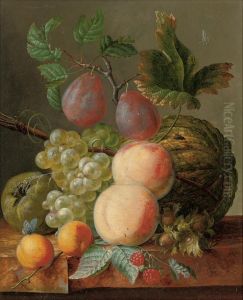William Hekking Paintings
William Hekking, born in Amsterdam, the Netherlands, was a 19th-century Dutch artist recognized for his landscape paintings. Hekking's artistic journey began in his birthplace, where he developed a keen interest in capturing the natural beauty of the Dutch countryside. His paintings often depicted the serene and picturesque landscapes that are characteristic of the Netherlands, featuring elements such as rivers, forests, and rural villages.
Hekking was part of the Romantic movement that was sweeping across Europe during the time. This movement emphasized emotion and individualism, as well as glorification of the past and nature. He was particularly influenced by the Dutch Romantic school, which included artists who focused on the grandeur and moodiness of landscapes. Hekking's work reflects this influence through his use of light and shadow to create mood and atmosphere in his depictions of the natural world.
Despite his Dutch origins, William Hekking also spent a significant period in Italy, particularly in Naples, which greatly influenced his work. The Italian landscape, with its vibrant light and dramatic vistas, inspired Hekking to infuse his own paintings with a sense of warmth and luminosity. His Italian landscapes, often imbued with a golden light, contrast with the more subdued tones characteristic of his Dutch scenes.
Over the course of his career, Hekking exhibited his work at various venues, gaining recognition for his skillful representation of landscapes. His paintings were appreciated for their technical quality and their ability to evoke the beauty of the natural environment. Although he was not as widely known as some of his contemporaries, Hekking's work has been valued by collectors and art enthusiasts, particularly those with an interest in the Dutch Romantic tradition.
William Hekking passed away in 1904, but his legacy lives on through his contributions to the Dutch landscape genre. His paintings can be found in various art collections and continue to be admired for their tranquil beauty and the artist's dedication to capturing the essence of the landscapes he loved.
